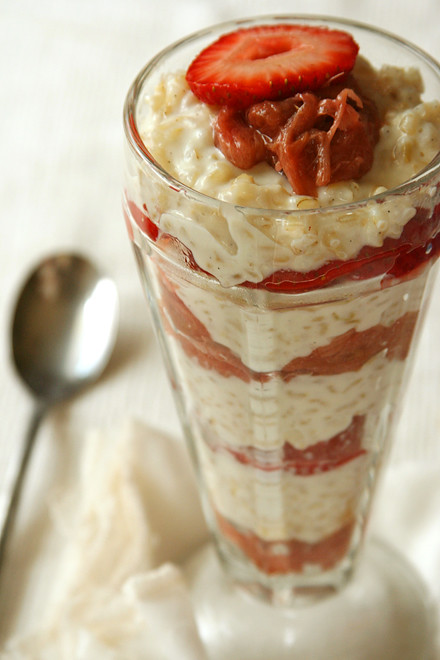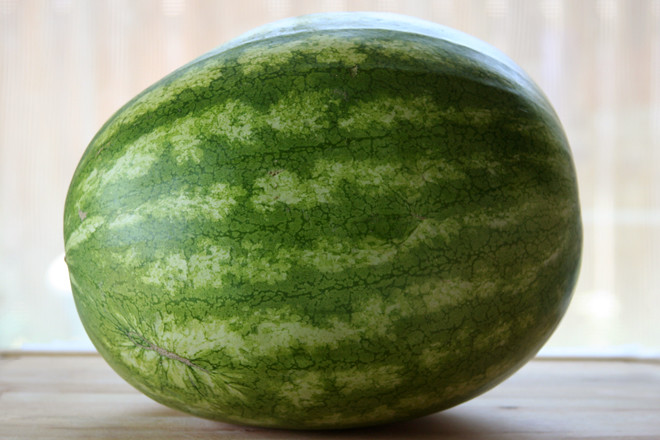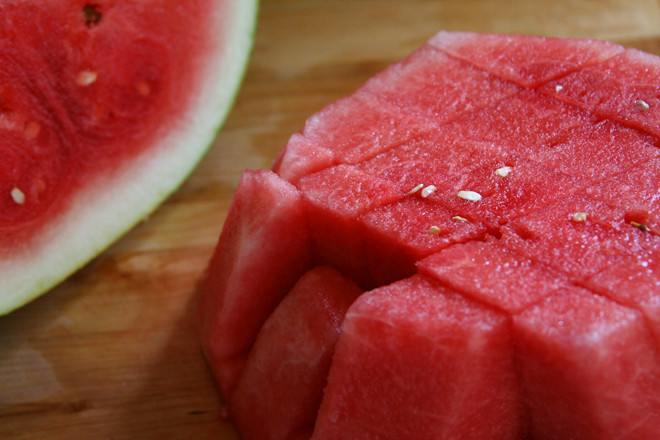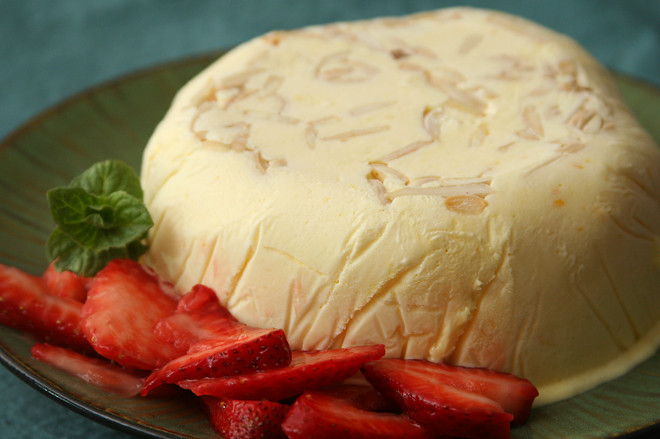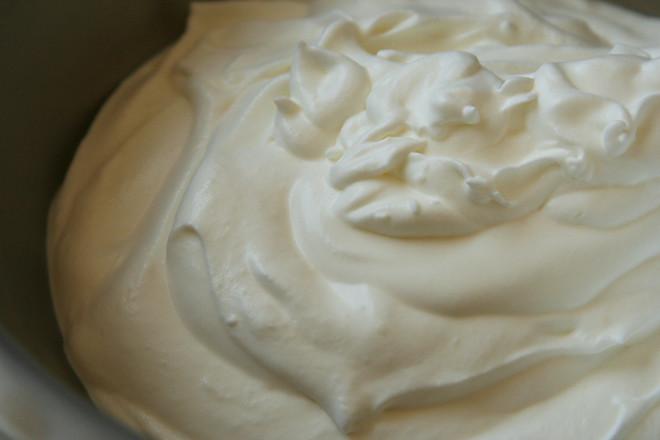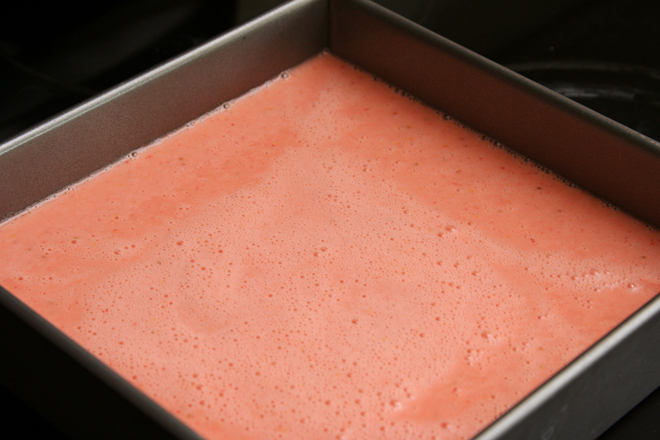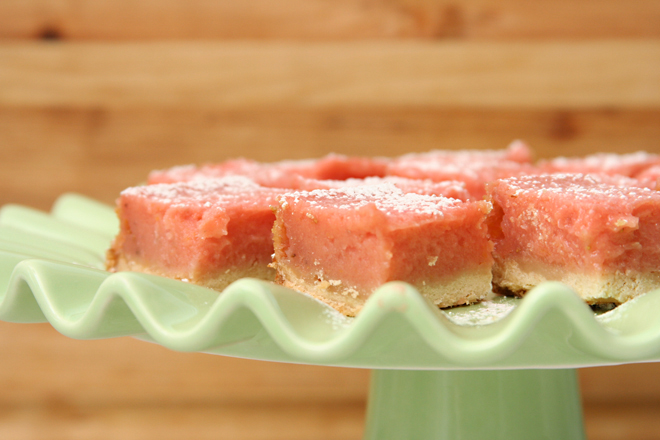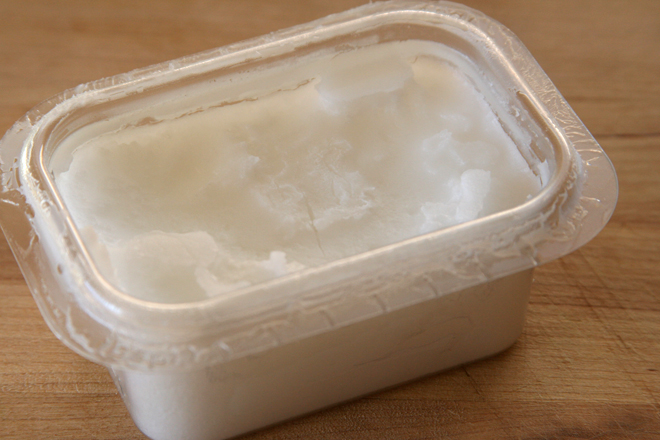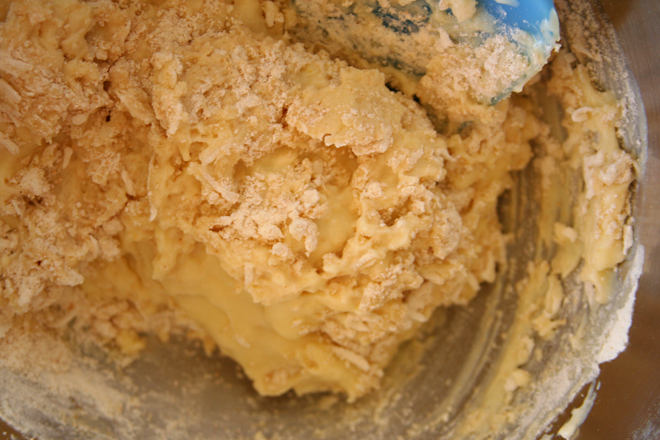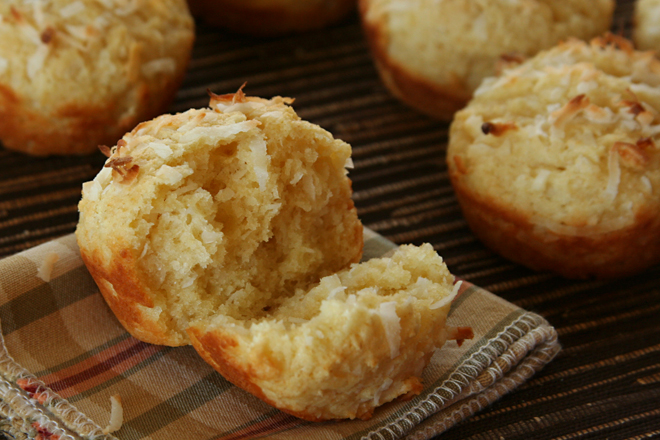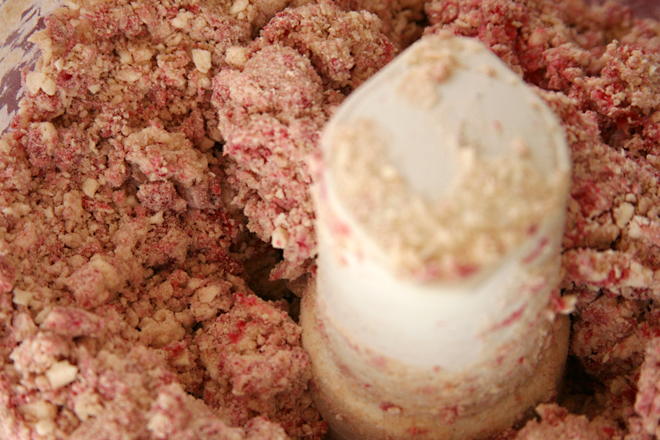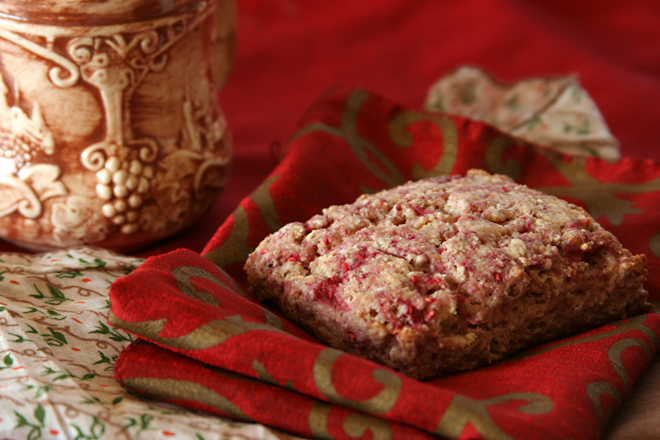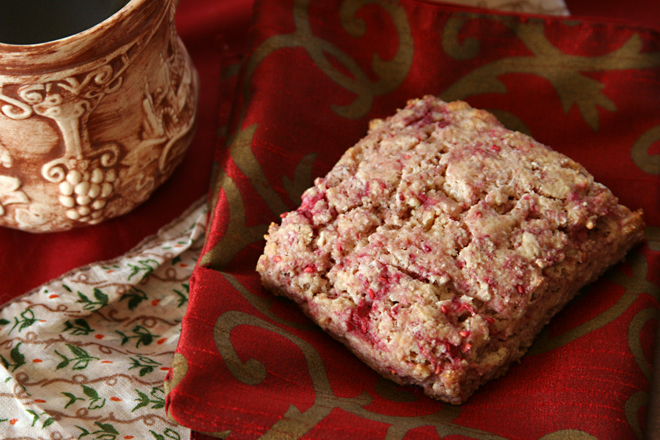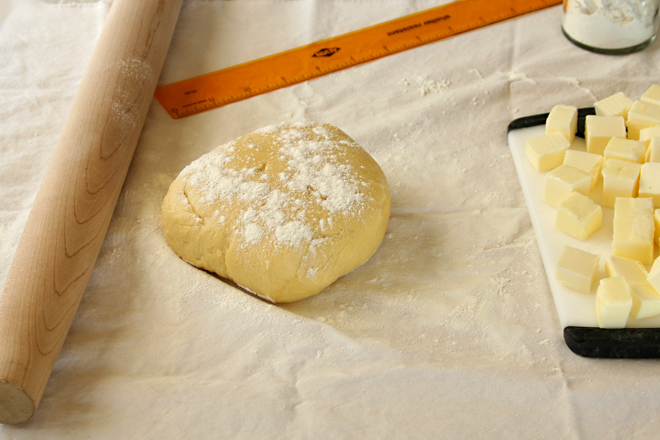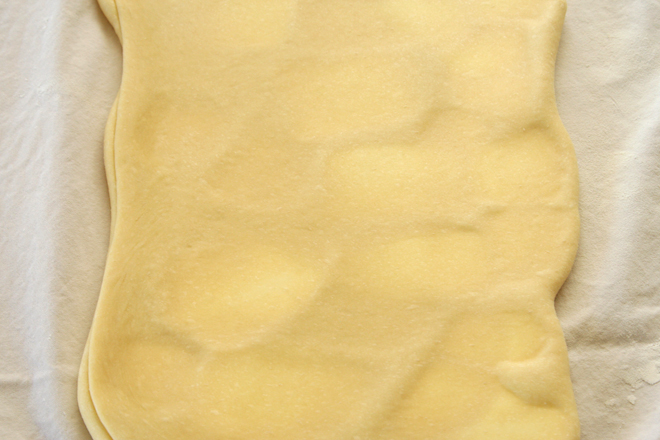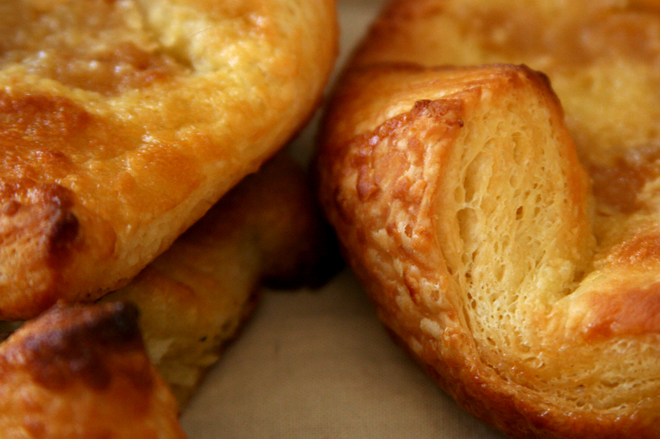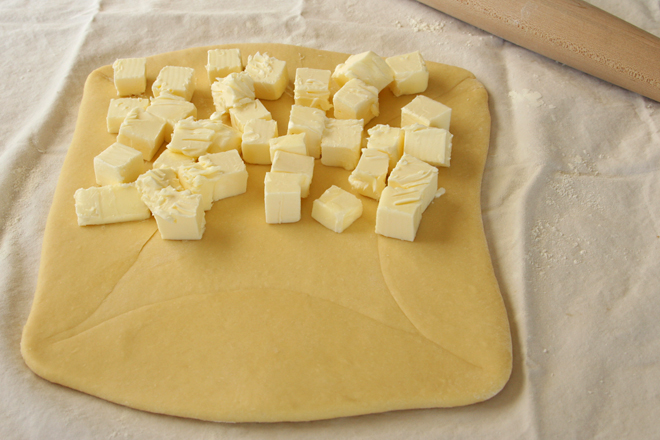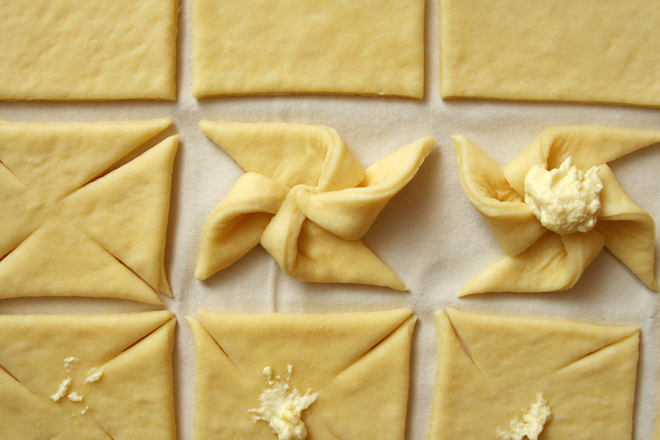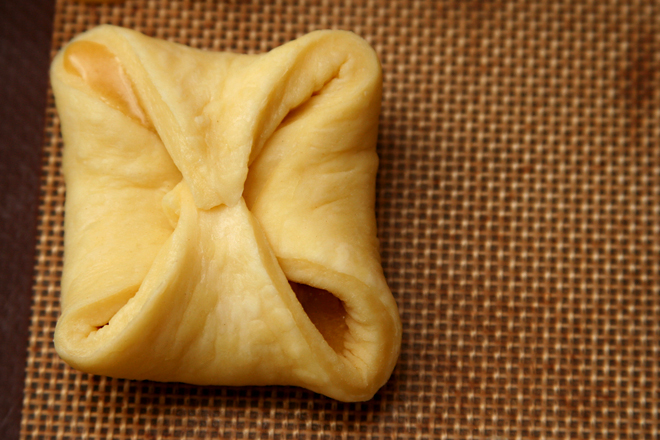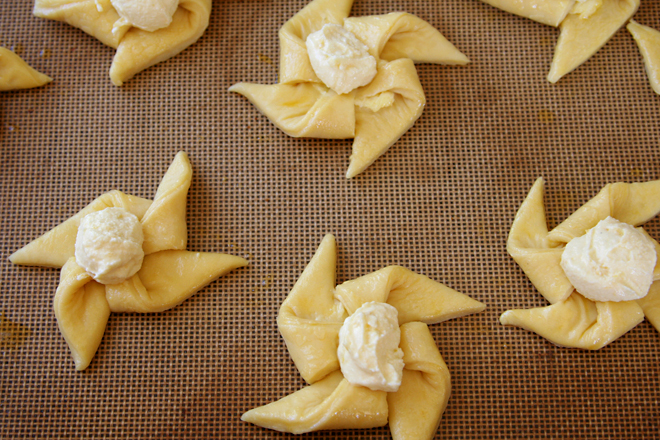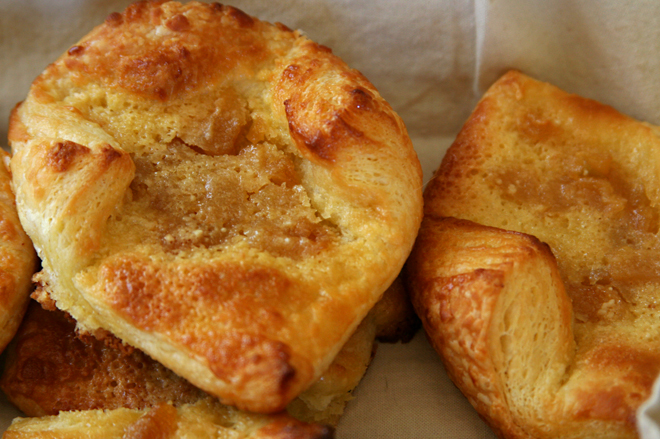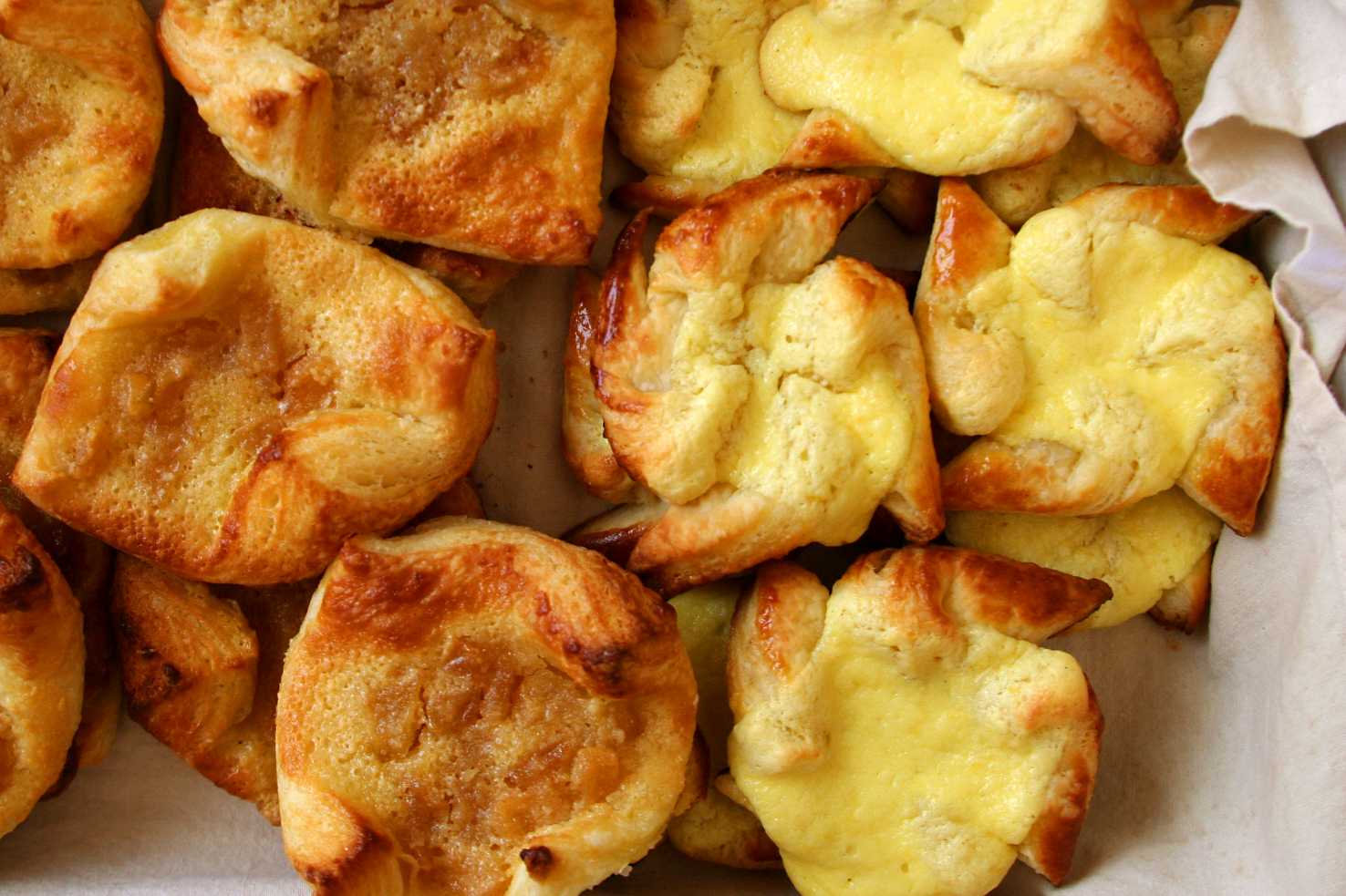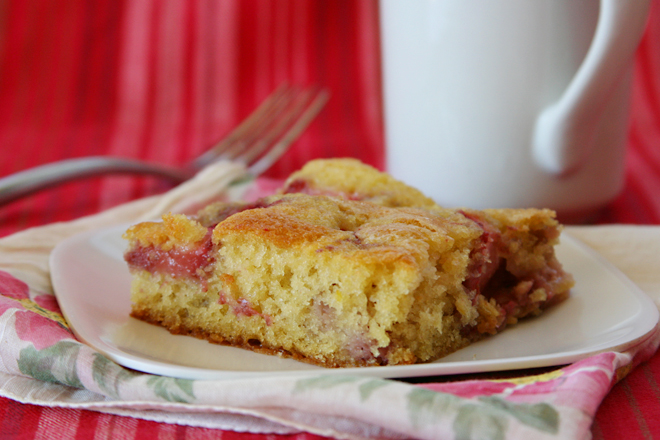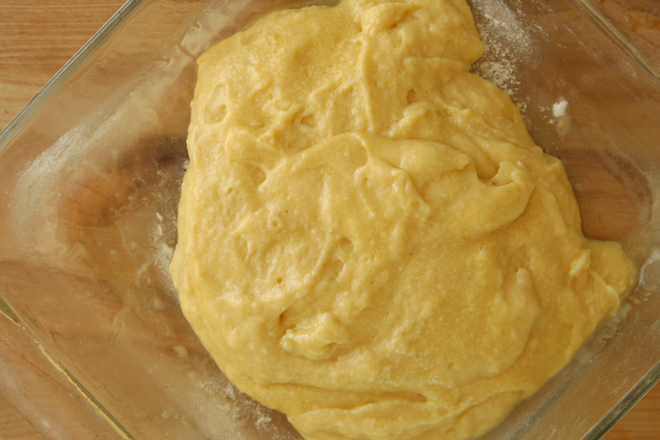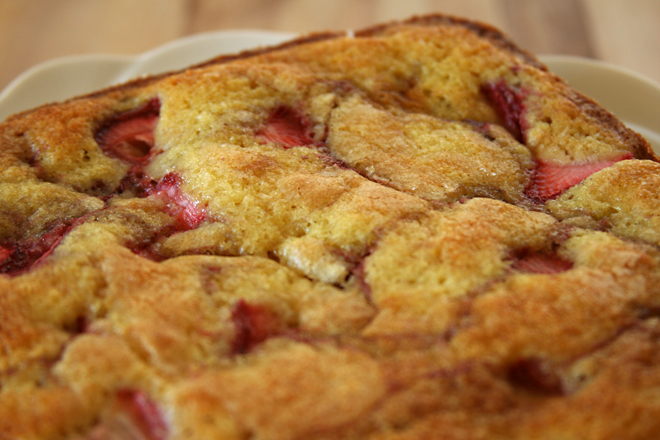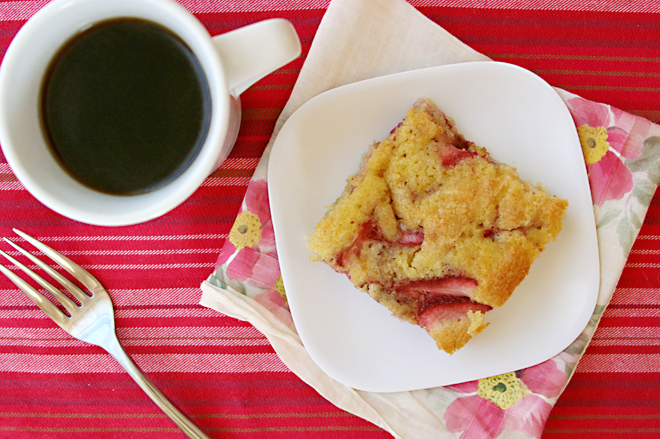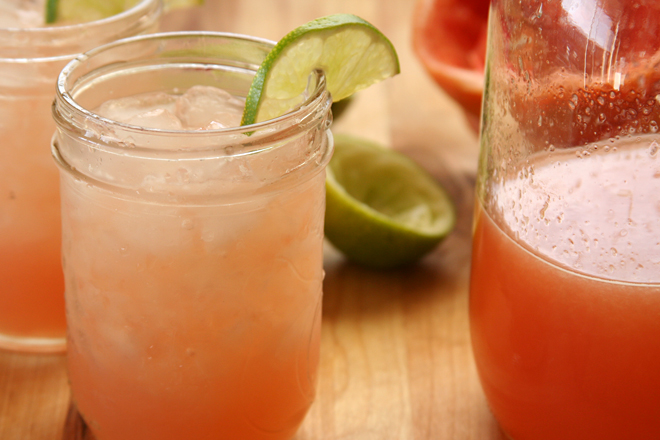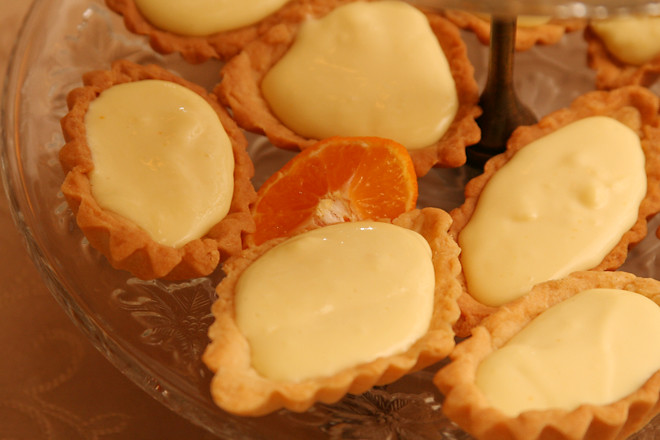One of the things I’m trying to do with my rhubarb surplus this year is not mix it with strawberries. (Please disregard this statement when my next post is strawberry rhubarb pie.) It isn’t that I have anything against strawberries and rhubarb together. Those two are often paired up for reasons beyond their aligned seasons. Sweet strawberries are a natural match for sour rhubarb.
But now that I’m starting to realize how much I enjoy rhubarb for its own merit, I want to use it more often by itself. Mixing it into batter for muffins was a good start, but a simple mostly-hands-off jam is an even more direct way to enjoy rhubarb. All it takes is cutting it up, mixing it with sugar, and giving it a few stirs while the oven softens and sweetens the stalks.
I used a spatula to mash up the roasted rhubarb, but if you wanted something smoother, you could puree it in a food processor or press it through a food mill. The chunky version would go wonderfully with tart plain yogurt, especially with some crunchy granola on top. And I can guarantee that it makes the perfect topping for brown rice pudding – along with some sliced strawberries, of course.
One year ago: Grapefruit Honey Yogurt Scones
Two years ago: Croissants (Martha Stewart’s recipe)
Three years ago: Rhubarb Scones
Four years ago: La Palette’s Strawberry Tart
Printer Friendly Recipe
Roasted Rhubarb Jam (from hogwash)
2 pounds rhubarb, cut into 1-inch pieces
½ cup (3.5 ounces) sugar
Pinch salt
Adjust a rack to the middle position and heat the oven to 400 degrees. In a 9-by-13-inch dish, mix the ingredients. Bake them, uncovered and stirring occasionally, until the rhubarb is soft enough to mash into a spread, about 1½ hours.
